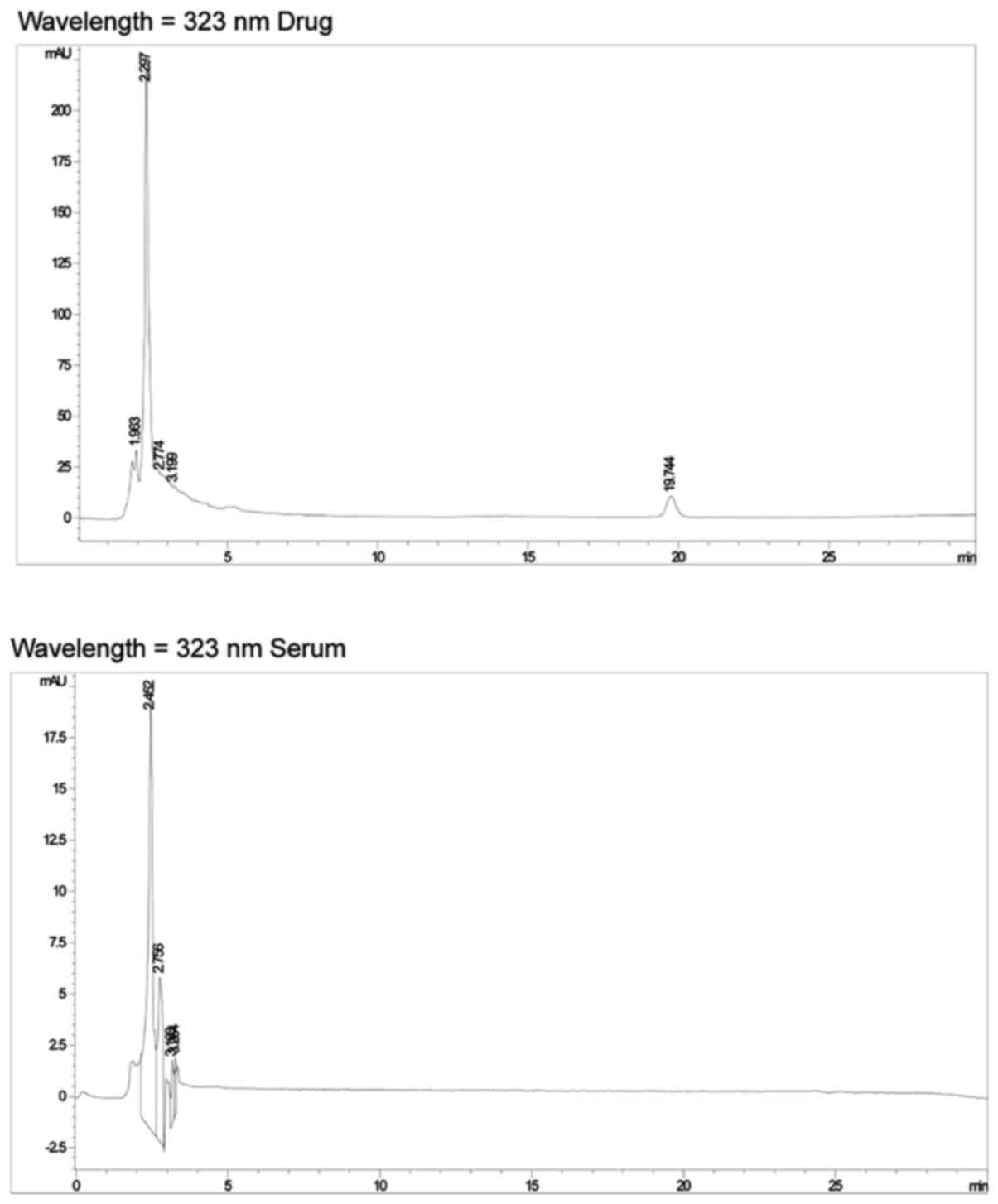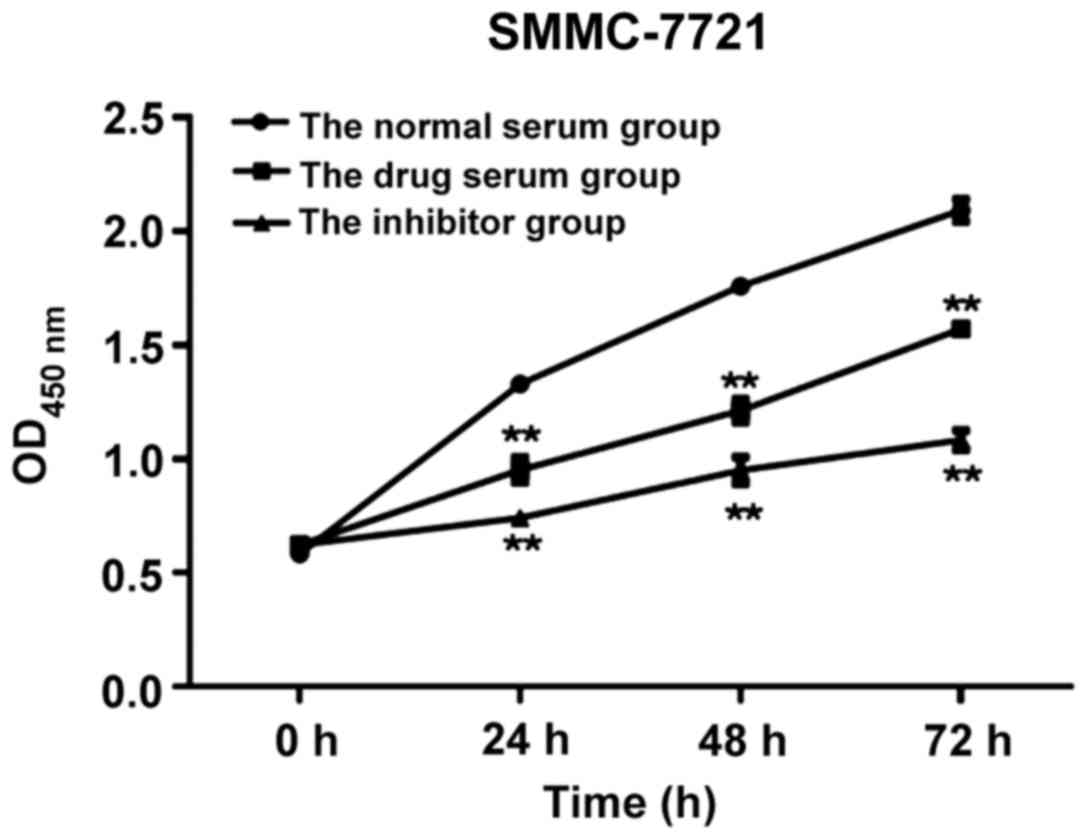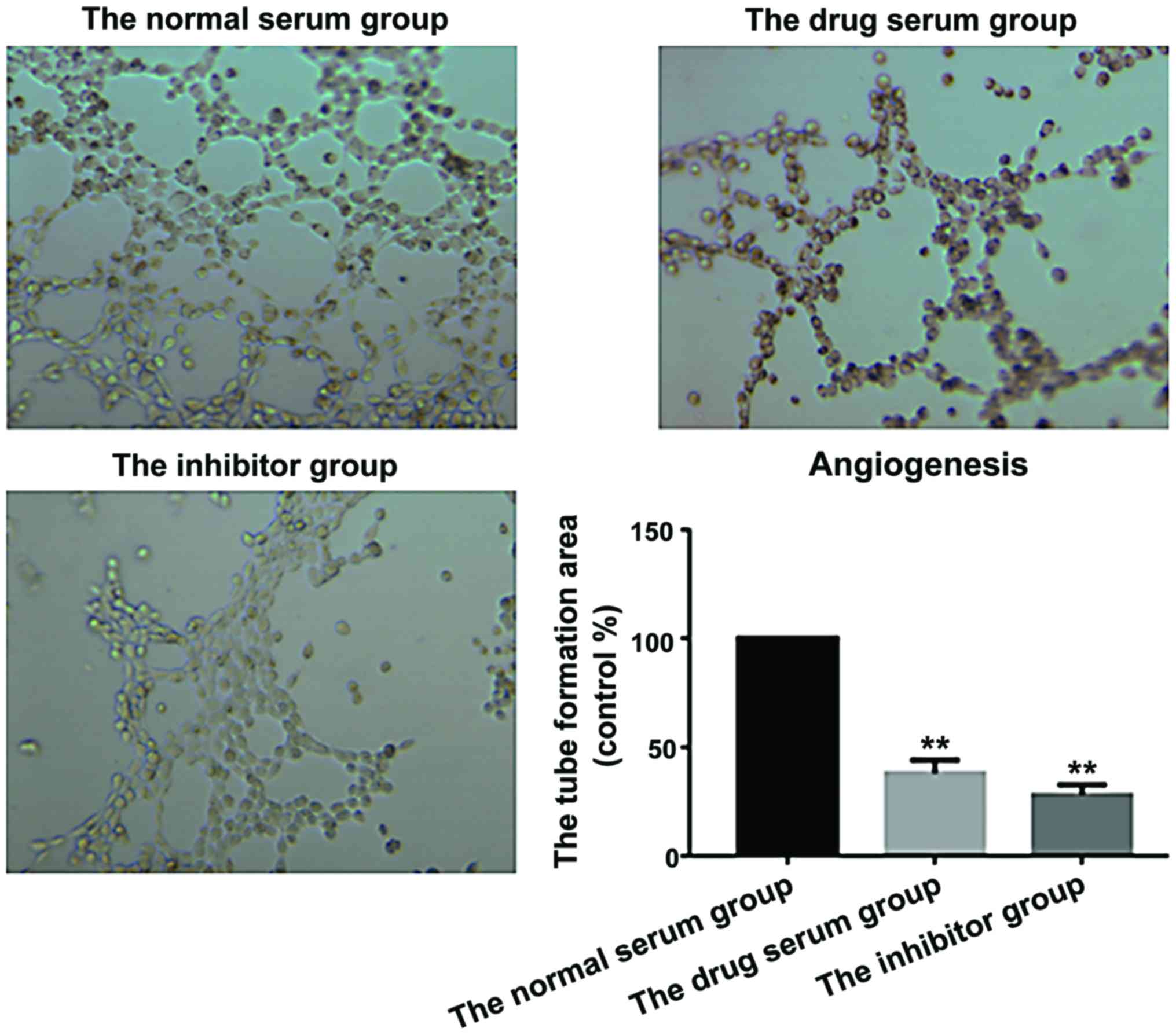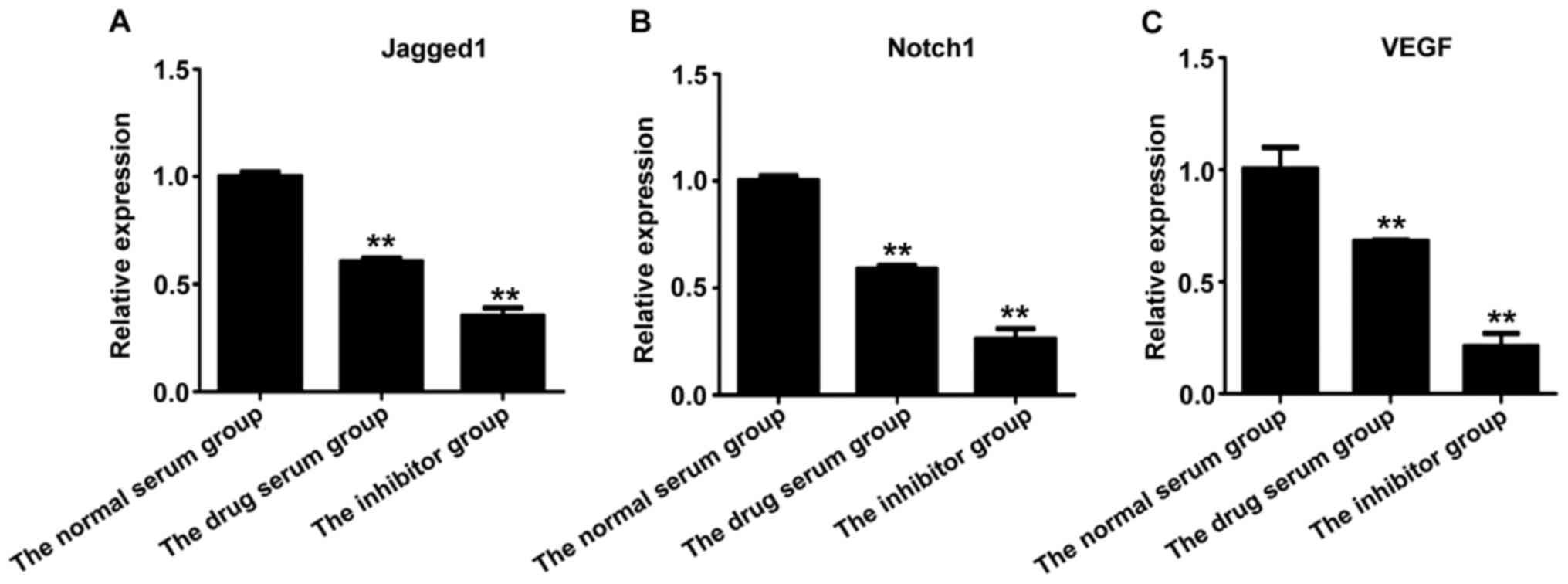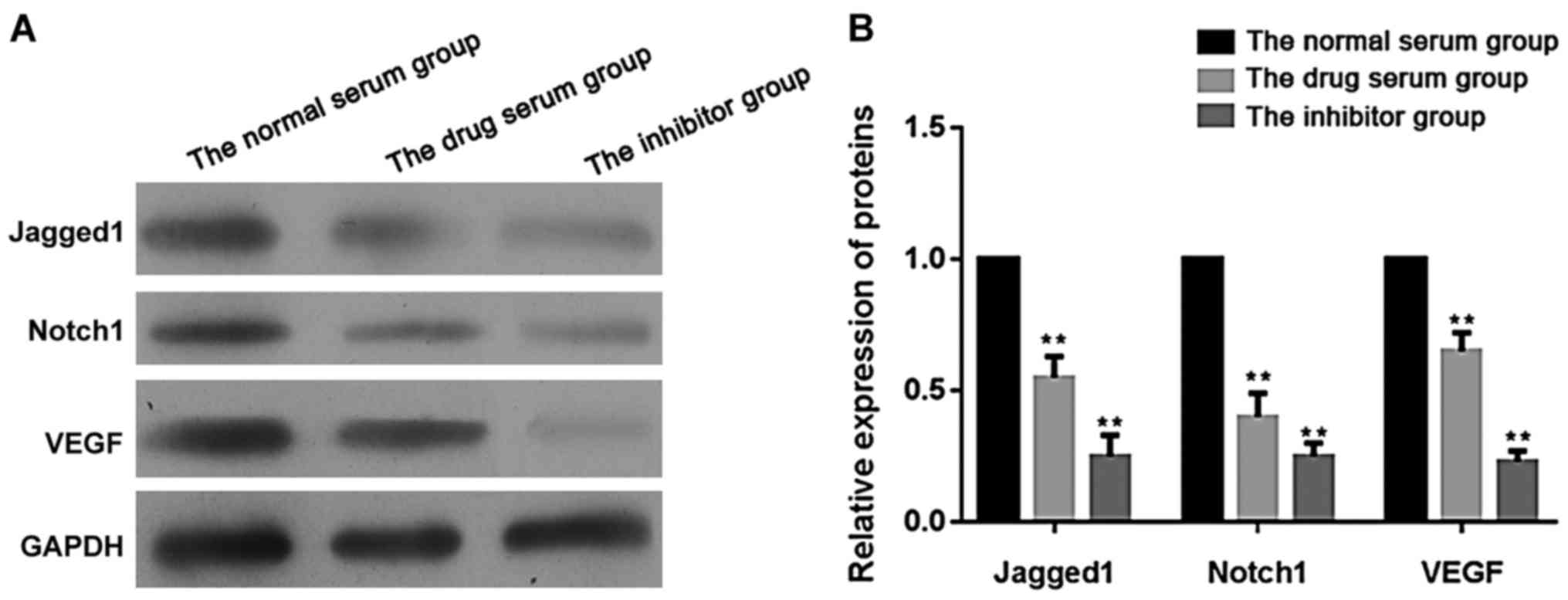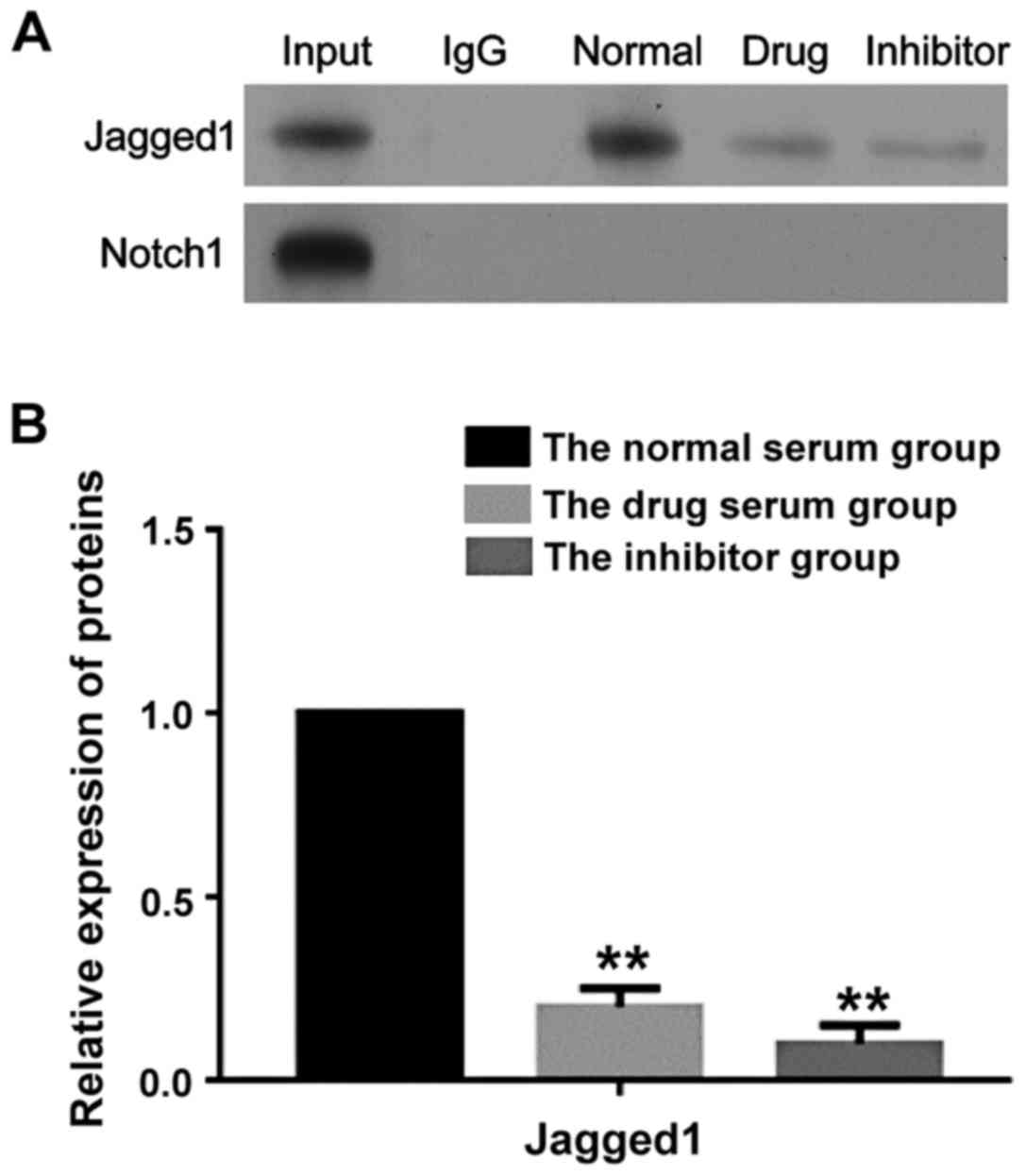The role of Jagged1/Notch pathway‑mediated angiogenesis of hepatocarcinoma cells in vitro, and the effects of the spleen‑invigorating and blood stasis‑removing recipe
- Authors:
- Published online on: July 19, 2017 https://doi.org/10.3892/ol.2017.6611
- Pages: 3616-3622
-
Copyright: © Lin et al. This is an open access article distributed under the terms of Creative Commons Attribution License.
Metrics: Total
Views: 0 (Spandidos Publications: | PMC Statistics: )
Total PDF Downloads: 0 (Spandidos Publications: | PMC Statistics: )
Abstract
The objective of this study was to observe the effect of Jagged1/Notch pathway‑mediated angiogenesis on the in vitro proliferation of hepatocellular carcinoma cells, and the effect and possible mechanism of the spleen‑invigorating and blood stasis‑removing recipe. Spleen‑invigorating and blood stasis‑removing recipe serum from SPF grade nude mice was prepared, and the fingerprint of the drugs of the spleen‑invigorating and blood stasis‑removing recipe and drug serum were identified by HPLC. SMMC‑7721 human hepatocellular carcinoma cells were divided into the normal control group, DAPT inhibitor control group, and drug serum group according to the different treatments. The Cell Counting Kit‑8 (CCK‑8) method was used to determine cell proliferation ability, and angiogenesis was observed under an inverted microscope. The expression of Jagged1, Notch1, and VEGF was measured by qPCR and western blot analysis. The interaction of Jagged1 and Notch1 was detected by Co‑IP. The CCK‑8 assay indicated that cell proliferation was inhibited in response to drug treatment (P<0.01). The expression of Jagged1, Notch1, and VEGF in the drug serum group was significantly lower than in the normal control group (P<0.01). Compared with the control group, the new vascular area of the DAPT inhibitor control group and drug serum group was smaller, and the blood vessels of the DAPT inhibitor control group and drug serum group were more sparse. The levels of Jagged1, Notch1, VEGF protein and the interaction between Jagged1 and Notch1 in the DAPT inhibitor control group and drug serum group were significantly lower than in the control serum group (P<0.01). In conclusion, the spleen‑invigorating and blood stasis‑removing recipe can inhibit the proliferation of hepatocellular carcinoma cells, and tumor angiogenesis in vitro. The function is related to the reduced expression of Jagged1, reduced interaction between Jagged1 and Notch1, and the reduced expression and activity of VEGF.



